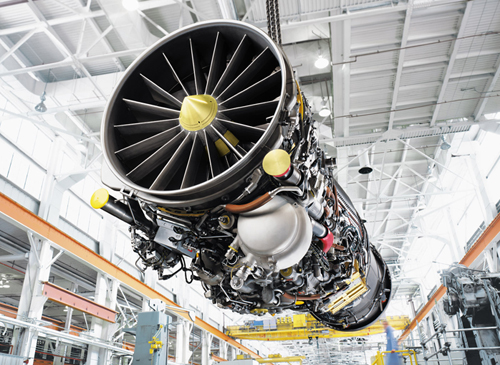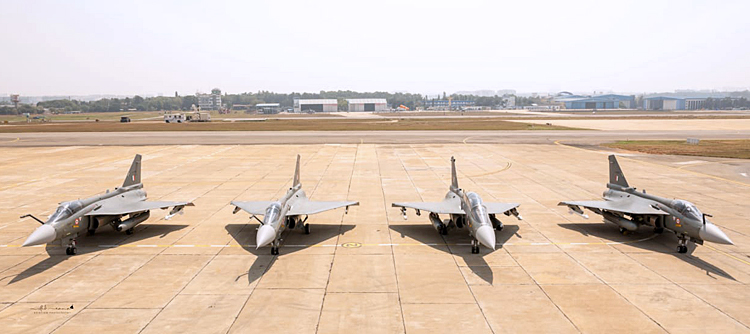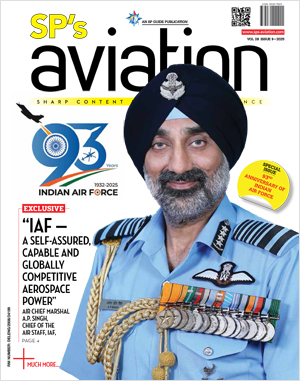INDIAN ARMED FORCES CHIEFS ON OUR RELENTLESS AND FOCUSED PUBLISHING EFFORTS

The insightful articles, inspiring narrations and analytical perspectives presented by the Editorial Team, establish an alluring connect with the reader. My compliments and best wishes to SP Guide Publications.

"Over the past 60 years, the growth of SP Guide Publications has mirrored the rising stature of Indian Navy. Its well-researched and informative magazines on Defence and Aerospace sector have served to shape an educated opinion of our military personnel, policy makers and the public alike. I wish SP's Publication team continued success, fair winds and following seas in all future endeavour!"

Since, its inception in 1964, SP Guide Publications has consistently demonstrated commitment to high-quality journalism in the aerospace and defence sectors, earning a well-deserved reputation as Asia's largest media house in this domain. I wish SP Guide Publications continued success in its pursuit of excellence.
AMCA and the Aero-Engine Conundrum
India must invest immediately in sixth-generation AMCA fighters with adaptive engine technology to ensure next-level air dominance
 |
The Author is Former Director General of Information Systems and A Special Forces Veteran, Indian Army |

India's most ambitious defence aviation project, the Advanced Medium Combat Aircraft (AMCA) has taken the first step into the execution phase with seven Indian companies and consortia submitting proposals to the Defence Research and Development Organisation (DRDO) before the September 30, 2025 deadline to jointly design, prototype and eventually manufacture the country's first 5th-generation stealth fighter jet. The ₹15,000 crore ($1.70 billion) programme, led by DRDO's Aeronautical Development Agency (ADA), is seen as a crucial leap in India's aerospace capability, aiming to deliver a modern twin-engine stealth platform for the Indian Air Force (IAF).
The ₹15,000 crore ($1.70 billion) AMCA programme, led by DRDO's Aeronautical Development Agency (ADA), is seen as a crucial leap in India's aerospace capability, aiming to deliver a modern twin-engine stealth platform for the Indian Air Force (IAF).
The AMCA will be a 25-tonne class twin-engine stealth fighter being designed with super-cruise capability, internal weapons bays, advanced avionics, AI-assisted mission support, and stealth shaping. It will be developed in two variants:
- AMCA Mk-1, powered by American GE F414 engines;
- AMCA Mk-2, featuring a 120-kilonewton engine jointly developed by France's Safran and India's Gas Turbine Research Establishment (GTRE) under the DRDO, aimed at complete indigenisation.
The firms in the race to build AMCA are a joint Indo-Russian bid from Hindustan Aeronautics Limited (HAL) and United Aircraft Corporation (UAC), Larsen & Toubro (L&T), Adani Defence and Aerospace, Tata Advanced Systems Ltd (TASL), Kalyani Strategic Systems (Bharat Forge), BrahMos Aerospace Thiruvananthapuram Ltd (BATL), and Mahindra Defence Systems.

All the bidders have proposed a partnership structure, mostly as a consortia, combining expertise across airframe manufacturing, electronics, avionics, propulsion systems and systems integration. In HAL's joint venture with UAC, HAL will retain a 50 per cent stake and induct four private partners to handle specific aircraft sections such as the front fuselage, wings, rear fuselage and centre fuselage, by engaging L&T, VEM Technologies, Bharat Forge and TASL. L&T has formed a strategic alliance with Bharat Electronics Limited (BEL), bringing together their capabilities in defence systems and integration, honed during their collaboration in the Tejas Light Combat Aircraft (LCA) programme. Bharat Forge) has teamed up with Bharat Earth Movers Limited (BEML) and Data Patterns, creating a vertically integrated bid covering structure, electronics and ground support systems. Adani Defence & Aerospace has submitted its bid independently. Goodluck–BrahMos–Axiscades consortium aims to integrate BATL's missile-grade manufacturing, Goodluck's engineering infrastructure, and Axiscades' aerospace services under one umbrella.
The AMCA will be a 25-tonne class twin-engine stealth fighter being designed with super-cruise capability, internal weapons bays, advanced avionics, AI-assisted mission support, and stealth shaping.
All the bids will now undergo rigorous scrutiny by a high-level committee chaired by A. Sivathanu Pillai, former chief of BrahMos Aerospace. The Pillai Committee will furnish a comprehensive evaluation report along with its recommendations to the Ministry of Defence (MoD). The MoD will have the final say in selecting the partners, ensuring that the chosen collaborators align with the project's technical, financial and strategic imperatives. The MoD is gearing up to select the winning partners by mid-2026. This decision following a EoI for Full Scale Engineering Development (FSED) will allocate production rights and workshares for prototype rollout in 2028 and operational squadrons by mid-2030s. But there are numerous apprehensions and questions being voiced, which need to be addressed. These are discussed in succeeding paragraphs.

- As of February 2025, the prototype development phase is supposedly underway after the completion of the feasibility study, preliminary design stage and detailed design phase by the Aeronautical Development Authority (ADA). The serial production earliest is likely to begin by 2035, but is the projected schedule too ambitious looking at the time schedule of development, trials, air-worthiness and introduction of the LCA Tejas? If the serial production will earliest commence in 2035, what is the time-schedule of providing the first AMCA squadron and subsequent ones to the IAF?
- The AMCA is to be fifth-generation stealth jet although in 2021, the then Chief of the Air Staff Air Chief Marshal V.R. Chaudhari had said that the AMCA would incorporate select sixth-generation elements. Notably, China has already revealed prototypes of its sixth-generation fighter jet. Speculation is that by the time the AMCA serial production begins in 2025, China is likely to have more than 1,000 sixth-generation fighter jets. Therefore, we must go far a sixth-generation AMCA that integrate artificial intelligence (AI) for autonomous decision-making, networked sensor fusion across manned-unmanned teams, hypersonic speeds and laser-based weaponry, enabling seamless operations in denied environments; superior to the the F-35 category of fifth-generation fighter jets.
- AMCA Mk-1 to be powered by the US GE F414 engine and AMCA Mk-2 by an engine jointly developed by Safran and GTRE should be seen in the following backdrop:
- GE faulted badly on its own commitments to India. The first GE F404 engine for the Tejas Mk1A was delivered two years late (in March 2025) and despite Prome Minister Modi's state visit to Washington in June 2023, negotiations to co-produce GE F414 engines in India for Tejas Mk-II are still dragging on. The US is most unreliable and can impede the AMCA programme, like the Tejas. Besides, transfer of technology (ToT) of the critical core of the engine is is unlikely.
- In order to appease the US, India reduced defence imports from Russia, did not consider Russian aero-engines, and went in for the GE-414 engine. Russia is, therefore, is providing advanced RD-93MA engines for Pakistan's latest JF-17 Thunder Block III fighters — designed by China and jointly produced with Islamabad. India has denied this, but according to Brahma Chellaney this denial is based on an unidentified Russian source, but China is procuring the RD-93MA engines from Russia for the joint production in Pakistan.
- America's next-Generation Adaptive Propulsion (NGAP) initiative is to develop advanced, adaptable jet engines with features like enhanced fuel efficiency, increased thrust, improved thermal management, and better survivability for future combat aircraft; Next Generation Air Dominance (NGAD) fighter, - the F-47. China's J-20 stealth fighter began receiving the domestically produced WS-15 engines in 2023. China has begun working on adaptive cycle engines. India's 120 kilonewton (kN) turbofan engine, to be developed jointly by GTRE and Safran, must use futuristic adaptive cycle engine technology; digitally controlled and able to adjust in flight, providing either more power or operating in a more fuel-efficient manner, according to the situation.
We must go far a sixth-generation AMCA that integrate artificial intelligence (AI) for autonomous decision-making, networked sensor fusion across manned-unmanned teams, hypersonic speeds and laser-based weaponry.

Recall the Tejas Mk1 crash on March 12, 2024 at Pokhran during Exercise 'Bharat Shakti' due to engine seizure triggered by an oil malfunction. One and a half year later in September 2025, HAL chairman D.K. Sunil has blamed the IAF for poor maintenance of the F414 engine, not the engine; sounds like blaming the pilot for the Air India flight 171 crash at Ahmedabad on June 12, 2025, absolving Boeing of any blame.
Finally, in the race for becoming a global power, India must invest immediately in sixth-generation fighters with adaptive engine technology. The need is not to plan for air parity with our adversaries but to ensure next-level dominance.





